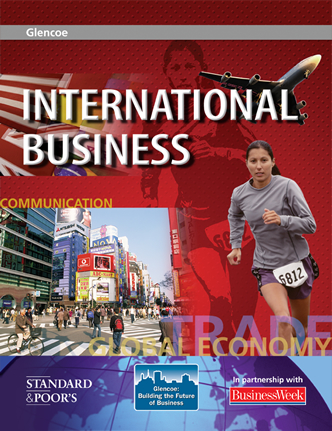
International BusinessUnit 3: International ManagementBusinessWeek Global BusinessRead the complete article and answer these questions from your textbook:
"Made in Italy" Keeps Its CachetItalian specialty furniture companies are finding ways to survive in the face of cheaper wares from China Ben Wals, a Dutch furniture retailer, has been coming to the annual Milan furniture fair for 30 years. He's at the Cappellini stand early on Apr. 5, the first day of the fair, admiring a new collection of brightly colored metal chairs called "Mr. Bugatti." "Customers love Cappellini design," he says. "It's very innovative, yet simple. I consider it No. 1." Wals isn't the only one hooked on Cappellini's combination of fanciful forms and bold, graphic colors. In 2004 a group of investors led by Luca Cordero di Montezemolo, the chairman of Fiat (FIA) and Ferrari, paid an undisclosed sum for a controlling stake in the Como-based furniture maker. Montezemolo's private-equity outfit, Charme, has spent the past three years assembling a portfolio of high-end Italian furniture brands that includes Poltrona Frau, Cassina, Alias, Gebrueder Thonet Vienna, Nemo, and Gufram. Now all these companies form part of Poltrona Frau Group, which logged sales of $287 million last year. FAMOUS FOR FASHION. Like Prada and LVMH ë Hennessy Louis Vuitton, the luxury-goods conglomerates that spent the late 90s gobbling up fashion and accessories companies, Montezemolo and his crew are betting that the whole can amount to more than the sum of its parts. "We invested in an industry that was absolutely unexploited, with incredible brands," says Matteo Cordero di Montezemolo, Luca's 28-year-old son and the CEO of Charme. "Italy is famous for fashion, food, Ferrari, and furniture—furniture was a segment where the companies in the high end are all small." That fragmentation once worked to Italy's advantage. "In the 70s, international industrialized furniture companies were pumping out products in big volumes that were all the same," recalls Giuliano Mosconi, CEO of Macerata-based Poltrona Frau Group. "Here entrepreneurs were working with designers to create an exclusive, handmade product for each single customer." IN JEOPARDY. But now iconic companies like Poltrona Frau, a 94-year-old outfit famous for its luxury leather sofas and armchairs, find themselves threatened with extinction. With average annual revenues of about $600,000, Italy's small furniture companies are closing down in droves in the face of competition from lower-cost rivals, notably the Chinese. The business model promoted by Charme offers some hope for survival. The group, which now employs 1,100, functions like a loose federation. Each company continues to offer its own unique line of products, enlisting its own designers and overseeing their own production, distribution, and marketing. Despite the country's comparatively high labor costs, all production work is performed in Italy. FERRARI'S AURA. Still, the umbrella structure has brought savings in areas like purchasing of supplies—such as leather—transport, and other logistics. "This is what I would call a great hope for Italy," says Gabriella Lojacono, a business management professor at Milan's Bocconi University. "It is important to bring in financial resources, but the creativity in these companies also needs to be supported by real strategic input." Charme's investors know a thing or two about marketing high-end products. Montezemolo cut his teeth at Ferrari, a car marque that purposely restricts the number of cars it turns out every year in order to burnish its aura of exclusivity. Diego Della Valle, another Charme investor, turned his family's small Italian shoemaker, Tod's, into a fashion sensation. Charme's backers, which include other prominent Italian entrepreneurs, such as Technogym CEO Nerio Alessandri, and banks, say they're not just in for a quick turnaround and exit, though they eventually plan to stage an initial public offering. For now, they are reinvesting profits while looking to mine synergies in areas such as purchasing and logistics. FINE LEATHER. So far the strategy seems to be working. Poltrona Frau has boosted sales sevenfold in five years, says Mosconi. Pretax profit reached $30 million last year, and Mosconi is aiming to more than double that, to $65 million, by 2008. This year is off to a good start, with sales up 20% in the first quarter over the same period last year. "There is worldwide demand for very personalized products, more than ever," Mosconi says. We need to offer the personalization of an artisan product in the framework of a global company." Indeed, demand for the high-quality work performed by companies such as Poltrona Frau has not evaporated. The company, which turns out seats for Ferraris and Maseratis and has outfitted the European Parliament and the Queen Mary II cruise liner, sources all of its fine leather from Italy. The hides are handstitched by artisans trained over years to perfection. "I love the stitching," says Yosuke Watanabe, general manager of a Tokyo-based furniture retailer with 70 stores, in Milan for the furniture fair. "Poltrona Frau makes classic, modern furniture with a natural quality that appeals to Japanese customers. And they even make furniture that can fit in our small apartments." Fine craftsmanship, apparently, is not lost in translation. By Maureen Kline April 10, 2006 Copyright 2000-2006 by The McGraw-Hill Companies Inc. All rights reserved. |  |















